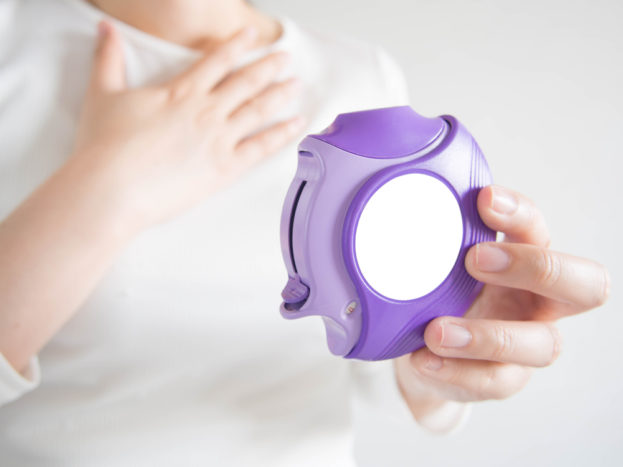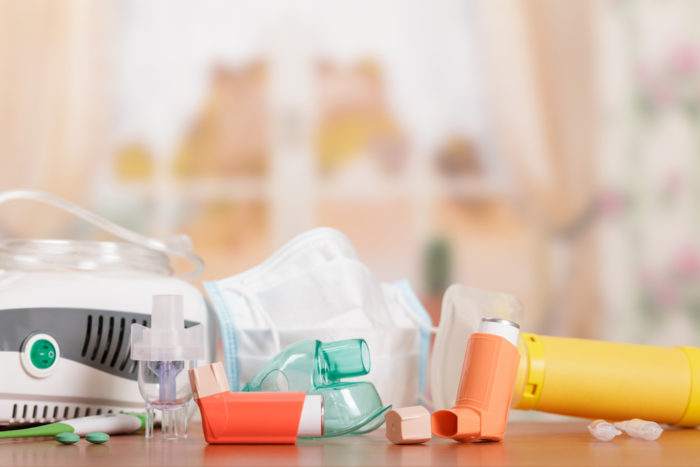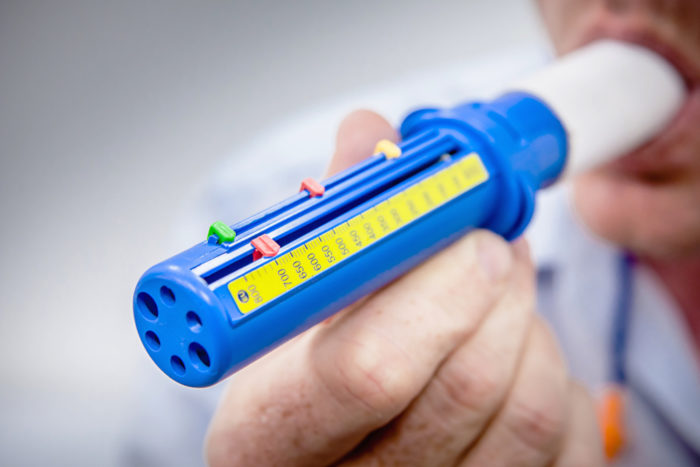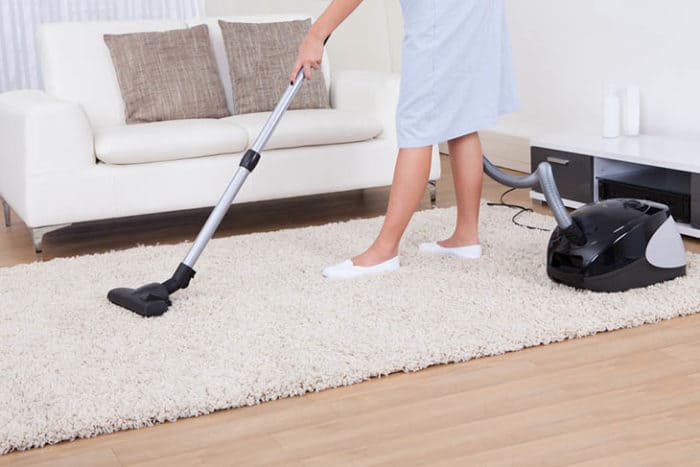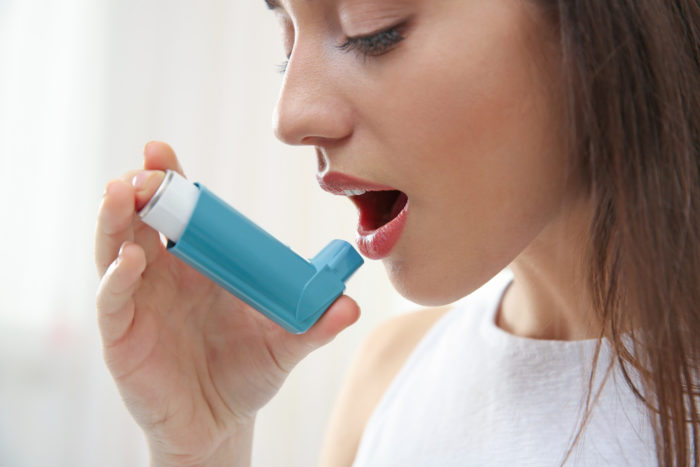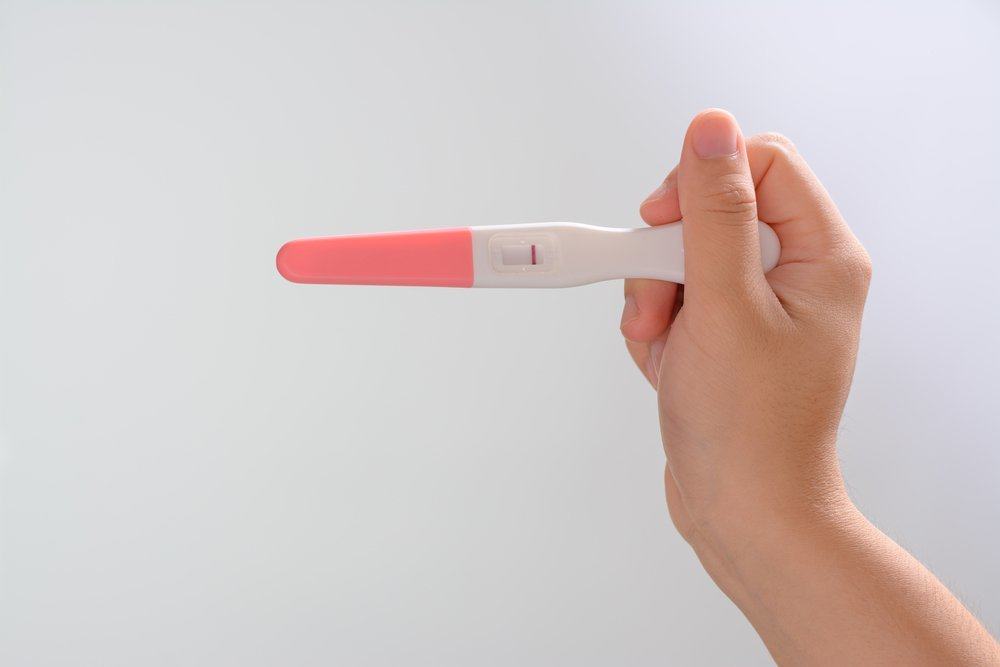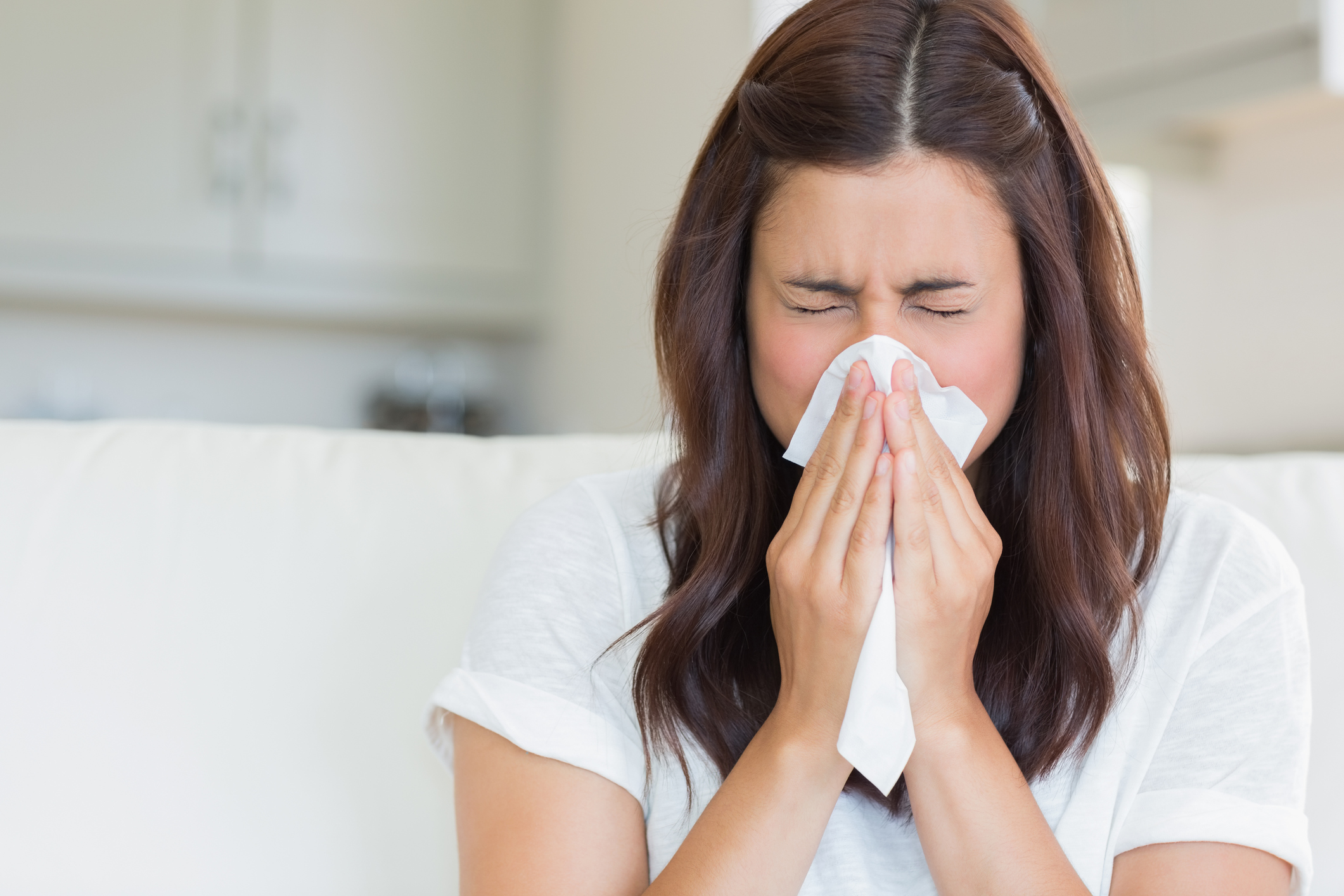Contents:
- Medical Video: A Hot Treatment for Asthma
- What causes recurrent asthma?
- Signs and symptoms of recurrent asthma
- How to deal with recurrent asthma
- 1. Calm down
- 2. Sit down
- 3. Arrange mouth breathing
- 4. Avoid the trigger
- 5. Follow the emergency treatment plan
- 6. Assess the severity of an asthma attack
- Use fast treatment for asthma
- 1. Medicine
- 2. Use a short-acting bronchodilator
- 3. Use a breathing apparatus
- How to prevent a relapse of asthma attacks
- 1. Check lung function frequently peak flow meter
- 2. Avoid triggers
- 3. Always take medicines
Medical Video: A Hot Treatment for Asthma
You will never know when asthma that you, your family, or your partner has recurring. When the asthma suddenly recurs in you or other people, the sufferer must be treated quickly.In addition to long-term treatment to control your asthma every day, there are short-term treatments that can be emergency treatments when your asthma recurs. Check out the various ways to deal with recurrent asthma below.
What causes recurrent asthma?
Asthma attacks usually occur when you are exposed to asthma triggers. Everyone has different asthma triggers. Therefore, it is important for you or those closest to you who have asthma to find out what things can trigger asthma symptoms.
Here are some of the most common trigger factors for asthma attacks:
- Allergy.Allergies and asthma are related to each other. This is why allergies are one of the most common causes of asthma. There are two types of allergies that can be a cause of asthma, namely inhaled allergies and food allergies. Inhaled allergies usually originate from certain substances, such as animal hair, dust mites, cockroaches, fungi, to pollen from trees, grass, and flowers. While in rare cases, asthma symptoms can occur when an allergic reaction develops more severely into anaphylactic shock after eating certain foods.
- Irritant. Cigarette smoke, air pollution, burning smoke, paint, gasoline, perfume, scented soap, chemicals or dust in the workplace can also trigger asthma attacks. Although some people may not have allergies to it, irritants can interfere with the sensitive and inflamed airways.
- Respiratory disease.Some diseases or infections that attack breathing parts such as colds, flu, sore throats, sinusitis, and pneumonia are the most common triggers of asthma in children.
- Sports. Exercise or intense physical activity can affect your asthma. For example, when you are jogging, you might unconsciously pull and exhale through your mouth. Well, this way of breathing can be the cause of asthma. This condition is known asexercise-induced asthma (EIA). With proper care, you don't need to help with physical activities that you like.
- Weather. Cold air, changes in temperature, and humidity can cause asthma. Weather changes that occur suddenly also sometimes can cause an asthma attack.
- Excessive emotions.Anxiety, crying, screaming, stress, anger, or laughing too hard can also trigger an asthma attack. When you feel strong emotions, without realizing it makes your breath go up and down, even if you have no history of asthma. Now this is what can cause wheezing or other asthma symptoms in people with asthma.
- Certain drugs. There are several drugs that can trigger asthma attacks, namely aspirin and NSAIDs (Nonstreoid Anti-Inflammatory Drug) In addition, beta blocker drugs commonly used for heart disease can also aggravate natural asthma symptoms.
- Other asthma triggers. Hormonal changes during the menstrual cycle, certain medical problems such as gastric acid reflux, pregnancy, sulfite or chemical preservatives in foods and drinks eaten can also trigger asthma attacks.
Signs and symptoms of recurrent asthma

Asthma symptoms vary greatly in each person. One person with another person can experience different symptoms of asthma. Including the severity, duration of the attack. up to the frequency. You may experience an asthma attack after a long period of no relapse, and then suddenly the symptoms of asthma appear regularly.
But in general, the first signs and symptoms of asthma appear to be difficult to breathe. This is caused by inflammation in the airways (bronchi) which causes the surrounding muscles to narrow, swell and remove a lot of mucus. As a result, the airways are blocked and you have difficulty breathing.
A person may experience shortness of breath accompanied by wheezing every time he exhales. Wheezing is a breath that sounds soft like a little whistling or "cool". This sound arises because air from inside the lungs is forced out through a narrow and blocked airway.
Asthma makes it difficult for sufferers to breathe freely or often feel out of breath. Someone may also feel distress when pulling or sighing. Coughing is also one of the most recognizable symptoms of asthma.
In severe cases, asthma symptoms can include:
- Heart palpitations
- Difficulty speaking, eating, and sleeping because of shortness of breath
- Lips and fingertips look blue
- Looks weak and lethargic
- Pale face
- Dizziness that never goes away
- The typical symptoms of asthma are getting worse and often
- Inhaler unable to relieve symptoms
How to deal with recurrent asthma
Follow some of the ways to deal with asthma that you can do:
1. Calm down
Calm is the first way to deal with asthma. So, when the asthma attack approaches, make sure not to panic. This applies to you when an asthma attack approaches or you see someone else experiencing it. Panic will actually make your body more stressful so you become more difficult to breathe. If you are in a crowded place, try to pull over to a rather quiet place.
2. Sit down
After being calm, look for a flat place for you to sit. Loosen your belt or remove some shirt buttons so you can breathe more freely. Resting while sitting can help relax your body and relieve your breathing.
3. Arrange mouth breathing
Try adjusting your breath slowly through your mouth. This is the simplest way to deal with asthma because it can help control shortness of breath when a recurrent asthma attack. This way of dealing with asthma helps slow the rate of breathing which makes every breath you breathe deeper and effective.
Not only that. breathing through the mouth can also help release the air trapped in the lungs. How to deal with asthma this one you can use at any time every time you experience shortness of breath.
Here's the guide:
- Relax your shoulder and neck muscles.
- Slowly breathe from the nose, hold it for a few seconds.
- Pour your lips as if you are going to whistle whistling.
- Inhale slowly through the mouth.
4. Avoid the trigger
Asthma will not appear if there is no trigger. So when a recurrent asthma attack, you must immediately avoid the trigger at that time so as not to worsen the symptoms. For example if your asthma trigger factor is cigarette smoke, then immediately stay away from those who smoke.
Similarly, if you want to help someone who has asthma. If you don't know someone's asthma trigger factor, ask them directly, if possible.
If one of your parents or immediate family has asthma, it is important to know what their asthma triggers are. This is done to help them avoid or prevent recurrent asthma attacks.
5. Follow the emergency treatment plan
If you or someone who has asthma has an emergency plan for asthma treatment, follow what is stated in the instructions. Emergency plan for asthma treatment, or what is called action plan is written instructions made by asthmatics and doctors. These instructions are designed to help patients control the symptoms of recurrent asthma.
By following an emergency treatment plan, you may not need to go to the ER. Action plan contains a guide to how to overcome asthma which includes:
- Emergency telephone numbers and location of emergency facilities
- List of triggers and how to prevent them
- Things that need to be done before exercising
- List of initial signs of attack that need to be considered, and what should be done when they occur
- List of names and dosages of medicines, and when and how they are used
It is important for you to always carry an inhaler, bronchodilator, or other emergency breathing device in your bag to anticipate if an asthma attack recurs at any time.
6. Assess the severity of an asthma attack
Some people may not know of the asthma attack they experienced in a mild or severe category. Even though this is important to do when you want to seek medical help from a doctor.
Some signs of an already severe asthma attack include:
- Lips and fingertips look blue
- Looks weak and lethargic
- Pale face
- The skin that looks sucked between the ribs and neck when you want to try to take a breath
- Asthma does not improve even after you have used an inhaler or bronchodilator medication
- Loss of consciousness
If you or someone else has a severe asthma attack as mentioned above, immediately seek medical attention immediately. You can contact the ambulance (118) or go directly to the emergency room of the nearest hospital around you.
Use fast treatment for asthma
When your asthma or other people relapse, quick treatment or first aid medication for asthma can be given. This rapid treatment will immediately reduce the narrow airways, while reducing symptoms of coughing, wheezing, and chest tightness.
1. Medicine
Reporting from GetAsthmaHelp, The following ways to treat asthma using drugs:
- SABA. Albuterol, Levalbuterol, and Pirbuterol are bronchodilators that relax the smooth muscles. This is the first treatment option to reduce acute symptoms and prevent EIB.
- Anticholinergics. inhibits muscarinic cholinergic receptors and reduces vagal intrinsic sound in the airways. Ipratropium bromide provides additive benefits to short-acting beta-agonist (SABA) in moderate to severe exacerbations of asthma. Can be used as an alternative bronchodilator in patients who cannot tolerate SABA.
- Systemic corticosteroids. although not a first aid, oral systemic corticosteroids are used for moderate and severe exacerbations in addition to SABA in accelerating recovery and preventing the return of exacerbations.
2. Use a short-acting bronchodilator
One way to deal with other recurrent asthma is to use short-acting bronchodilator. Almost all people with asthma use this drug. A bronchodilator will help open the blocked airway due to asthma.
Similar to some previous medications, short-acting bronchodilators are used as first aid drugs in asthma or rescue drugs. While long-acting bronchodilators can be used every day to control asthma, combined with inhaled steroids.
This bronchodilator reduces acute asthma symptoms or attacks asthma very quickly by opening the airway. This rescue medicine is the best way to overcome asthma if at any time the attack appears suddenly or suddenly. This bronchodilator will work within minutes after inhalation and ends 2-4 hours later.
In addition, short-acting bronchodilators are also commonly used before exercise to prevent asthma related to exercise. It can also be used as nebulizer liquid form of asthma to treat asthma attacks at home.
Short-acting bronchodilators cannot be used every day.If you have to use this short-acting broccodilator too often, either in an inhaler, tablet or liquid, that means your asthma is out of control and you need to be treated better. If you use it more than twice a week, talk to your doctor about how to re-plan treatment to control your asthma symptoms.
However, don't forget, bronchodilators can also cause side effects. Some of the most common side effects of using this drug include:
- Trembling
- Restless
- Heart palpitations or palpitations
- Stomach ache
- Insomnia
- Muscle aches or cramps
3. Use a breathing apparatus
The use of inhaled medication is considered more effective because it can send drugs directly to your respiratory tract. However, inhaled asthma medications usually require special tools so that the benefits can be felt optimally.
The most commonly used breathing apparatus for people with asthma are inhalers and nebulizers. Both of these tools together act to control symptoms and relieve recurrent asthma attacks.
- Inhaler
Small spray-shaped asthma inhaler. This tool is usually used in adolescents and adults because it is practical and does not take up space. As long as you use this tool as instructed by the doctor, the inhaler is very effective for controlling asthma and minimal side effects.
Inhalers should not be used interchangeably with other people. Article: Asthma inhalers have many types that have different dosage strengths and functions. In addition, using other people's inhalers is also a high risk of contracting an infection.
- Nebulizer
Nebulizer is more commonly used as a therapy for the treatment of chronic asthma or serious asthma cases, both in children and elderly parents. This is because compared to the inhaler, the steam produced by the nebulizer is so small that the drug can absorb more quickly into the targeted part of the lung.
This tool is a machine that is powered by battery or electricity. If the inhaler has a small funnel for you to put your mouth in and breathe medicine, the nebulizer is usually equipped with a hose that has a mask on the end for you to use when breathing the medicine.
How to prevent a relapse of asthma attacks
1. Check lung function frequently peak flow meter
Quoted fromWebMDWhen you have an asthma attack, it is very important to know when you should contact your doctor or asthma specialist to prevent emergency asthma. Learning how to monitor your asthma will help you know when to deal with emergency asthma.
You can use a tool called peak flow meter, which is one of the recommendations of experts to control asthma. Peak flow meter can be used at home and is a simple device that is useful for you. By breathing using this tool, you can read what your latest lung movements and functions are like.
When you are first diagnosed with asthma, your doctor may ask you to use it peak flow meter every day for 2-3 weeks. The highest number that comes out of peak flow meter is the best value for you. Most asthma action plans are based on reading peak flow. Based on these readings, you can take different actions to deal with your asthma.
2. Avoid triggers
There are many things that can trigger asthma. So it's important for you to know what specific things can trigger your asthma to recur in order to avoid it.
Various asthma triggers may include:
- Sports or physical activity that is too heavy.
- Inhalant allergens, such as dust mites; stinging perfumes and fragrances; air pollution from vehicle exhaust fumes / factory waste chemical fumes / cigarette smoke; animal fur; flower pollen; tree wood powder; and others.
- Cold and dry windy weather, hot weather supported by poor air quality (full of pollution), and drastic temperature changes.
- Upper respiratory tract infections (such as colds, flu, or pneumonia).
- Food allergy.
- Side effects of certain drugs, such as NSAIDs (aspirin and ibuprofen) and beta-blockers for heart disease.
- Have a history of gastric acid reflux (GERD).
- Foods or drinks that contain preservatives (such as MSG).
- Excessive stress and anxiety.
- Singing, laughing, or crying too much
3. Always take medicines
Asthma attacks can occur anytime and anywhere. Therefore, it is important for people with asthma to always carry emergency medicines in their bags. Make sure you carry an inhaler, bronchodilator medication, or other fast-controlling drugs wherever you go. Don't forget, always carry it action plan or instructions for a doctor's asthma treatment plan. This instruction can be used as an emergency measure of first aid in asthma if the symptoms recur at any time.



